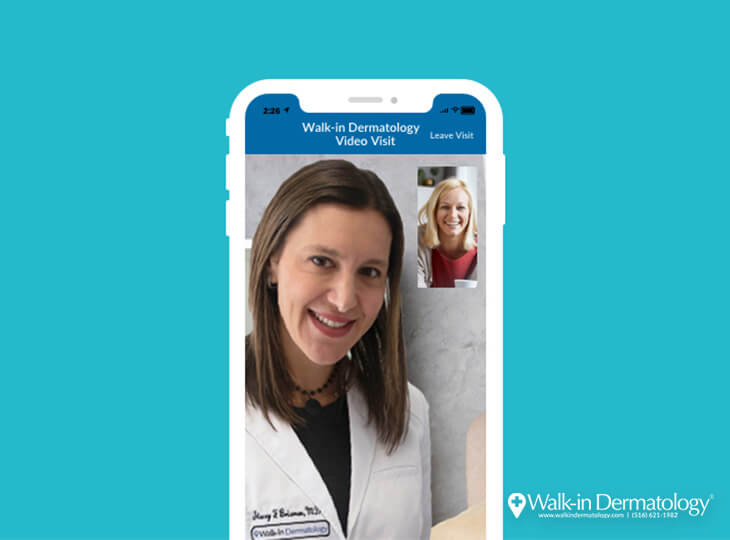Tues: 8:30am - 3:00pm
Wed: 12:00pm - 6:00pm
Thurs: 8:30am - 3:00pm
Fri: Closed
Sat: 8:30am - 12:30pm
Sun: Closed
Greenvale, NY 11548
How Telemedicine is Changing Healthcare


Given the current pandemic, remote access to healthcare is more important than ever. The spread of the infectious Covid-19 means risks and limitations on patients who need to visit a health facility for a check-up. In many cases, telemedicine is the answer to this problem.
With telemedicine services, healthcare is changing by providing increased access to more doctors, answering urgent patient concerns, reducing healthcare costs, and providing more convenient options for diagnosis and treatment. For doctors, telemedicine is also helping them become efficient with their time and monitor their patients more consistently.
What is Telemedicine?
Telemedicine, or “telehealth,” is the remote diagnosis and treatment of patients through electronic communications. This includes video calls, teleconferencing, emails, chat, image sharing, and more. Broadly speaking, telehealth refers to caring for a patient through interactions over computers, telephones and other digital devices.
Telemedicine dates back to the 1960s, when a line connected Logan International Airport to Massachusetts General Hospital. This was done so that doctors could examine those who were feeling unwell at the airport clinic, while avoiding Boston traffic. Now, telehealth is widely used in medical fields such as cardiology, dermatology, behavioral health, and others in order to care for communities underserved by hospitals and physicians.
According to Maryville University, 45% of physicians and health professionals consider telehealth a high priority, while 88% are considering telemedicine services to improve patient outcomes.
As telemedicine improves and patients gain access to talk with their healthcare providers anywhere at any time, the landscape of healthcare services is rapidly growing.
How Telemedicine is Changing Healthcare
How exactly is telemedicine improving healthcare? Here are six ways:
Access to doctors
Visiting a doctor in the United States is becoming increasingly difficult due to a shortage of physicians. In fact, the US is expected to have a shortfall of over 120,000 doctors by 2030. Aside from the long time it takes to schedule an appointment, this shortage has made finding specialists for specific conditions a challenging task.
While telemedicine will not be able to solve this problem entirely, it can help through virtual consultations. Instead of scheduling an in-person visit for non-emergency injuries or illnesses, you can opt to get 24/7 diagnosis and treatment from home. Through remote consultations, minor conditions can be treated before they become major issues. This can save a lot of time for both patients and healthcare providers.
Telemedicine can also connect you to specialists, especially if you have limited access to transportation or healthcare services. These specialist doctors can provide care to patients even in rural areas, since they don’t have to travel.
Answer urgent concerns
Telemedicine enables patients to get the care they need, when they need it. Instead of traveling to a healthcare facility or waiting for an appointment, doctors can answer your concerns quickly through a videoconference.
If there are urgent problems that arise while you are continuing treatment at home, you wouldn’t need to book another appointment and wait all over again. Telemedicine can reduce these delays and provide valuable care information immediately.
Reduce healthcare costs
There are a few reasons why healthcare costs are skyrocketing:
- People tend to visit expensive facilities such as the emergency room, even if this may be unnecessary.
- Some patients who are rehabilitating will need to stay in a hospital room so their doctors can monitor them.
- In order to make it to a doctor’s appointment, some people may need to take time off work and travel to the hospital or clinic.
Telemedicine can eliminate these problems and reduce a lot of unnecessary costs. For example, if a patient needs medical attention in the middle of the night, they wouldn’t need to rush to the emergency room. Instead, they can contact a virtual doctor for quick advice and treatment. They can also save valuable time in making a decision, since the virtual doctor can recommend a visit to the ER when necessary.
Patients who rely on regular monitoring can also avoid paying for hospital fees, since most doctors are now amenable to allowing them to rehabilitate outside the hospital. With medical video conferences you can easily update your physician.
Increased privacy
Some patients are hesitant to visit a hospital for a number of reasons. Maybe they don’t want to be exposed to possible infections, or are uncomfortable with the presence of other patients, nurses, and hospital staff. In these cases, telemedicine helps protect a patient’s sense of privacy.
Patients can consult with their doctors from the comfort of their home. Another benefit of telemedicine is instead of having physical documents, test results, or other lab exams handled by a third party, doctors and patients can send these files directly to one another.
Improve hospital staff efficiencies
For both patients and doctors, minor problems and follow-up consultations are very time consuming. With telemedicine, patients avoid the trouble of visiting the hospital. This helps address the congestion and overcrowding that happens in hospitals.
Doctors and hospital staff can prioritize urgent cases more effectively. Human error and delays can also be reduced. For example, telemedicine in the intensive care unit can greatly help staff provide better service and attention to patients. Tele-ICU systems can give nurses critical data such as:
- Notes from previous nurses and doctors for reference
- Consistent monitoring of the patient’s condition
- Bedside assessment through cameras, even from the nursing station
Consistent patient monitoring
It is not easy to travel back and forth to seek healthcare services, especially if you have problems with mobility. In these cases, telemedicine can provide you with convenience and regular monitoring.
Doctors can continually check on how a patient is doing through teleconferences and remote monitoring devices. These devices can collect patient data in real-time such as blood pressure, heart rate, and oxygen levels, which can alert healthcare providers if something is wrong. As a result, if there is a severe need, changes can be made or patients can be scheduled for an in-person visit. Early intervention and proactive measures also lead to better care for the patient in the long run.
The Future of Telemedicine and Healthcare
As the adoption of telehealth grows across the United States, it is expected to lead to better health outcomes through improved access, lower costs, and convenience of delivery – so patients will never be put off from checking in with their doctors.
Virtual health as the new normal
Soon, the term telemedicine may be replaced by “virtual health”. Since telemedicine implies a video component, virtual health builds on this by combining video with artificial intelligence, chatbots, and other apps.
The next generation of virtual health will incorporate artificial intelligence into the health process. Apps and various bots can guide patients through questions and collect data, with some of them even being equipped to interpret a response. Once a patient is connected with a human provider, the necessary information is already collected and ready to be used.
Joint efforts from care providers
The communication between nursing staff, physicians, and specialists will continue to improve through telemedicine. Through cloud technology, collaboration will be possible and health care providers can interact by using smartphones, laptops, and tablets.
It is expected that telemedicine will enable systems that connect primary care practitioners and specialists. For example, data from a patient may be collected by a virtual health app. The data then passes on to a physician, who decides that a patient will need a transplant. Through the same app, the physician may have the option to connect with the right specialist and send patient data directly for evaluation.
Modified spaces for health facilities
Hospitals, clinics, nursing homes, and physicians offices may need to be redesigned and configured to include secure cabling, high-resolution cameras, speakers, and monitors. Similar to an ICU setup, the future of telemedicine will equip health facilities to function as remote care centers.
Instead of forcing patients to travel when they need care, equipped nursing homes and hospital rooms will allow practitioners to provide consistent bedside care without disruptions. Family and friends may also be linked into video consultations, so all relevant parties are properly informed about how to care for the patient.
Walk-in Dermatology: Your Partner in Telemedicine
Walk-in Dermatology offers Video Visits with our board-certified dermatologists as an alternative to in-office consultations. Instead of traveling back and forth to meet with our medical staff, you can have a virtual skin examination and receive a treatment recommendation. We can also provide prescriptions for you, all done remotely. Sign up for a Video Visit appointment today.








